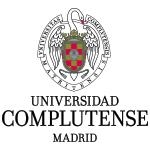Persistent multispecies dissemination of armA-carrying IncR plasmids among clinical and environmental bacterial populations in a Spanish veterinary hospital
Investigation article published in Journal of Clinical Microbiology
November 12nd, 2025
Aminoglycoside resistance mediated by 16S rRNA methyltransferases poses a growing threat in both human and veterinary medicine. Here, we conducted a retrospective genomic study of Enterobacterales isolates (n = 789) collected from clinical samples at a veterinary teaching hospital in Spain between 2011 and 2020. We identified four high-level aminoglycoside-resistant ST171 Enterobacter hormaechei subsp. xiangfangensis isolates carrying the armA gene, all from horses. Using Illumina and Nanopore sequencing, we determined that armA was located on a 70 kb IncR plasmid, also carrying other resistance genes such as msr(E), mph(E), blaDHA-1, and qnrB4, embedded within a Tn1548-like element. Genomic comparisons indicated that the IncR plasmid was linked to a 2008-2010 ST11 Klebsiella pneumoniae outbreak in companion animals at the same hospital, with >95% sequence plasmid identity. Although the IncR plasmid lacked conjugative genes, it was mobilizable in vitro via co-resident conjugative plasmids. To probe for an environmental reservoir, we sampled three horse stalls in 2022 and recovered 19 armA-positive isolates (E. hormaechei, Klebsiella pneumoniae, and Mixta calida) whose IncR plasmids were nearly identical to that found in clinical clones. Broader analysis of 1,330 IncR plasmids from the genomic plasmid database PLSDB revealed that most were mobilizable, frequently co-integrated with other replicons, and carried diverse resistance genes, though armA was uncommon. These findings demonstrate that non-conjugative IncR plasmids can persist in the environment and be horizontally disseminated to clinical isolates over a long period of time, underscoring the need for routine, plasmid-focused genomic surveillance in veterinary healthcare settings within a One Health framework.IMPORTANCEThe spread of antimicrobial resistance threatens both human and animal health. In veterinary hospitals, bacteria can share resistance genes not only through direct transmission but also via mobile plasmids that persist in the environment. In this study, we uncovered a decade-long persistence of a non-conjugative IncR plasmid carrying the armA gene, which confers high-level aminoglycoside resistance, in a Spanish veterinary teaching hospital. This plasmid was found in clinical isolates of Enterobacter hormaechei, Klebsiella pneumoniae, and Mixta calida from horses and from the hospital environment. Our findings show that even plasmids lacking self-transfer capability can be maintained and disseminated across bacterial species over many years. These results highlight the need for routine genomic surveillance of plasmids in veterinary healthcare settings to prevent long-term environmental reservoirs from fueling recurrent outbreaks
Serna C., Pulido-Vadillo M., Matamoros BR., Fernandez-Favieres FJ., Montero N., Garcia-Berdun C., Garcia ME., Blanco JL., Delgado-Blas JF. and Gonzalez-Zorn B..
 | Servicio de Zoonosis de Transmisión Alimentaria y Resistencia a Antimicrobianos (ZTA). Centro de Vigilancia Sanitaria Veterinaria (VISAVET). Universidad Complutense (UCM). |
 | Departamento de Sanidad Animal. Facultad de Veterinaria. Universidad Complutense (UCM). |
 | Hospital Clínico Veterinario Complutense (HCVC). Universidad Complutense (UCM). |

